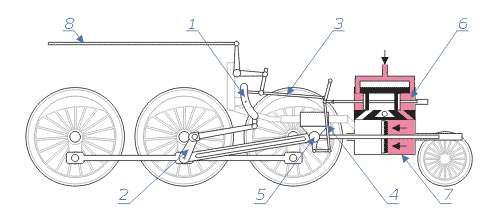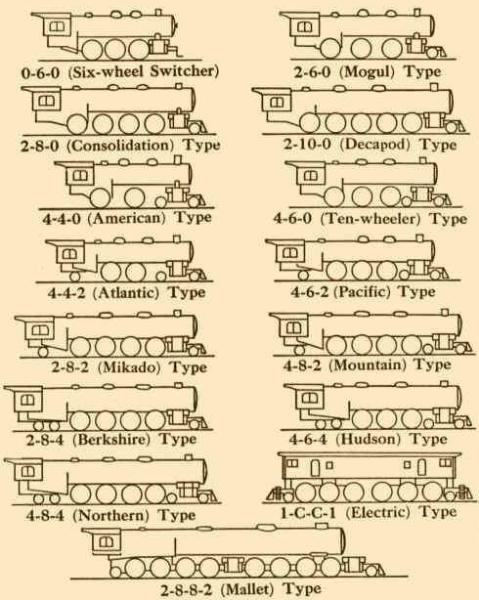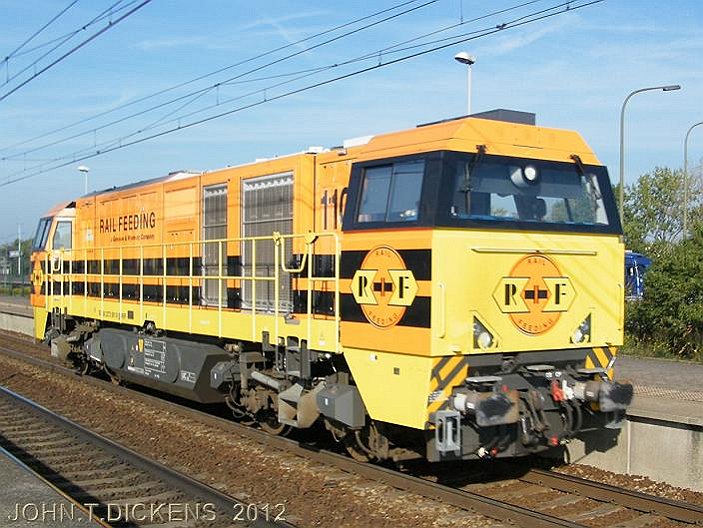

Steam locomotive wheels, valve & engine animation. Walschaerts valve gear (mechanism for moving the valve in a steam engine). Item 2 is a crank outside of the main crankpin. Its "timing" is a quarter turn away from the power crankpin. This provides the main force to move the valve. Item 1 is pivoted (little dot, just below the callout arrow) to the frame (light gray) in the middle, so it rocks back and forth. It has a groove (inside; not shown) along its length, which carries a sliding block, pivoted on the left end of link 3. The engineer moves pushrod 8 left and right to move link 3 up and down. If the link is below center, the engine moves backwards. If the link is near to the center, steam is conserved for ordinary running when up to speed. The short link below the numeral 3 (not the arrow) that seems to point up into the air "from the wheel edge" is pivoted on the frame (not shown) at its upper end. It supports the rest of the links below it. The right end of link 3, therefore, doesn't move up and down much; its sidewise motion operates the valve. Item 4 is the crosshead, the sliding piece that guides the piston rod. (Callout 4 also points to a link that improves valve timing.) Note the typically-European piston rod -- it's very long, and unlike American (and some other) designs, it extends out front (to the right). The other types of locos. don't have any piston rod to the right side of the piston. Item 5 is the pivot where the main connecting rod (long groove. shown, to make it lighter) connects to the crosshead. Item 6 is the cylinder and valve block. Pinkish color is steam from the boiler. Exhaust is white. The valve is a pair of black vertical stripes, connected together. (It's shaped something like a spool.) As shown (without animation), steam is going into the right side of the cylinder (Item 7), pushing the piston to the left. The piston rod pushes the crosshead, which pushes the main connecting rod. (The piston is in the middle of the cylinder. Unlike pistons in internal-combustion engines, steam pistons are discs.)




 |










